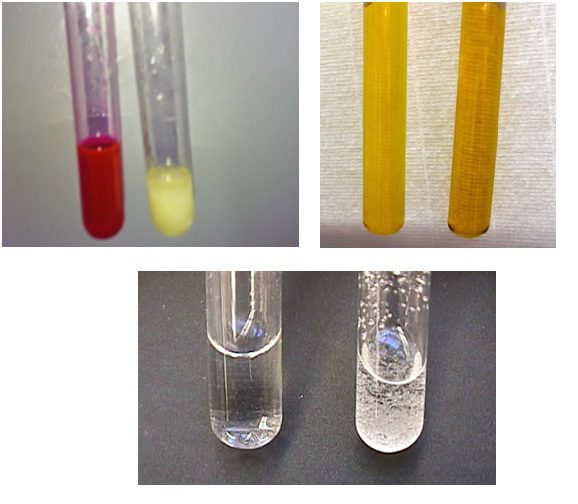Adulteration in Food : Chemistry Investigatory Project
Adulteration of food means substitution of the genuine food material wholly or partially with any cheaper or inferior substance or removal of any of its constituents, wholly or partially which affects adversely the nature, substance or quality of food.
Food products sellers sometime mix cheaper but having similar appearance substances to a foodstuff partially with a motive to earn more profits. This substituted substance now only lowers the quality of taste and nutrition but also causes serious health hazard to people consuming it. This practice of mixing is called adulteration.
Thus, adulteration of food means substitution of the genuine food material wholly or partially with any cheaper or inferior substance or removal of any of its constituents, wholly or partially which affects adversely the nature, substance or quality of food. According to the Indian preservation of food adulteration act (pfa), 1954, any ingredient which when present in food, is injurious to health is an adulterant. Sometimes, seeds, barks, leaves and other matter are dressed up to look like genuine foodstuffs and are used to adulterate pure ones.
Aim:
To study the common food adulterants in fat, oil, butter, sugar, chilly powder and pepper.
Requirements:
- Test Tubes
- Burner
- Sugar
- Black Pepper
- Glass Tumbler
- Conc. Hcl
- Dilute And Conc. H2so4
- Glacial Ch3cooh
- Vanaspati Ghee
- Red Chilly Powder
Manyavar – Vedant Fashions Limited IPO : Stock Price, GMP, Linkintime
Procedure:
A: to test Vanaspati ghee in butter
- Take about 1g of butter sample in a test tube and heat it gently to melt it
- add about 0.5g of sugar and 4-5 drops of HCL. shake it mixture for 5-6 mins
- note down the change in colour

B: to test dyes in fats and oils
- Take about 1ml of the given fat or oil in a test add 1ml of the mixture of conc h2so4 and glacial acetic acid in the ratio 1:4.
- Shake the content gently and heat it moderately
Note down the change of colour, if any
C: To test chalk in sugar
- Take about 1g of sugar in test tube and add 2ml of dilute h2so4 in it.
- Observe the effervescence evolved, if any.
D: To Test Papaya Seeds In Black Pepper
- Take Beaker Half-Filled With Water And Add 5g Of Black Pepper In It.
- Observe If Any See Floats On Water Surface Or Not.
E: To Test Artificial Colour In Chilli Powder
- Take A Glass Of Tumbler Filled With Distilled Water And Add About 5g Of Red Chilli Powder In It.
- Stir The Mixture Well Using A Glass Rod And Allow It To Stand For 8-10 Mins.
- Note Down If Brick Red Colour Is Appeared In Water Or Not.
F: To Test Yellow Lead Salts In Chilli Powder
- In A Beaker Add 1g Chilli Powder And Dil.Hno3.
- Filter The Solution, To Filter Add Two Drops Of Potassium Iodide Solution.
- Observe The Change In Colour, If Any.
Observation
| S.NO | TESTED FOOD STUFF | PROCEDURE | OBSERVATION | INFERENCE |
| 1 | BUTTER | SAMPLE+SUGAR+HCL | COLOUR OF
MIXTURE CHANGES TO PINK |
VANASPATI GHEE IS PRESENT |
| 2 | FATS AND OILS | SAMPLE+H2SO4+CH3COOH+
HEAT |
APPEARANCE OF PINK COLOUR | NON-EDIBLE DYES ARE PRESENT |
| 3 | SUGAR | SAMPLE+H2SO4 | NO EVOLUTION OF EFFERVESCENCE | CHALK IS ABSENT |
| 4 | BLACK PEPPER | SAMPLE+WATER | FLOATATION OF SOME SEEDS | PAPAYA SEEDS ARE PRESENT |
| 5 | CHILLI POWDER | SAMPLE+DISTILLED WATER | BRICK RED COLOUR | ARTIFICIAL COLOUR IS PRESENT |
| 6 | CHILLI POWDER | SAMPLE+HNO3=FILTRATE+ KI SOLUTION | YELLOW PRECIPITATE | LEAD SALT IS PRESENT IN CHILLI POWDER |
Conclusion:
Adulteration found in the following foodstuff:
- Butter: yes
- Fats and oils: yes
- Sugar: no
- Black pepper: yes
- Chilli powder: yes